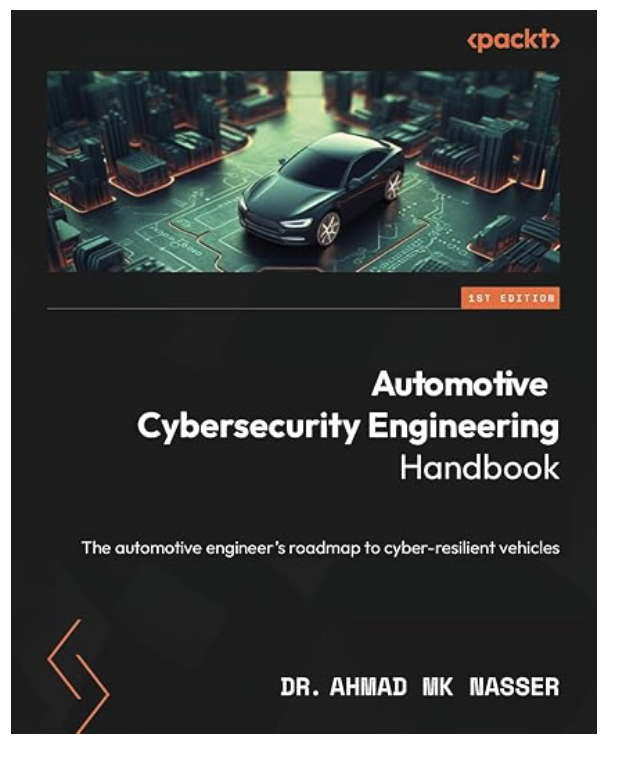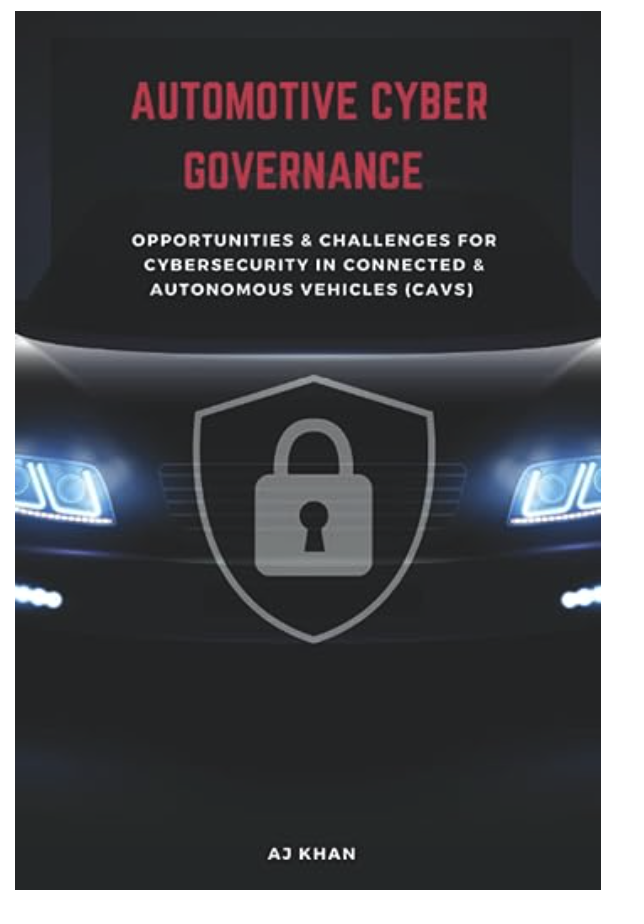Blog
Recent Posts
Automobile Cybersecurity: Safeguarding the Future of Mobility
Posted by on
 The automobile industry has revolutionized over the past decade, evolving from simple mechanical machines to sophisticated, connected systems. Modern cars have advanced technologies, including Internet of Things (IoT) connectivity, autonomous driving features, and complex infotainment systems. While these innovations offer enhanced convenience and efficiency, they also introduce new challenges, particularly in cybersecurity. As vehicles become increasingly digital and interconnected, ensuring their security is paramount to protecting user safety, privacy, and trust.
The automobile industry has revolutionized over the past decade, evolving from simple mechanical machines to sophisticated, connected systems. Modern cars have advanced technologies, including Internet of Things (IoT) connectivity, autonomous driving features, and complex infotainment systems. While these innovations offer enhanced convenience and efficiency, they also introduce new challenges, particularly in cybersecurity. As vehicles become increasingly digital and interconnected, ensuring their security is paramount to protecting user safety, privacy, and trust.
The Growing Threat Landscape
Automobiles are now essentially computers on wheels, containing Electronic Control Units (ECUs), sensors, and communication modules that manage various functions, from braking and steering to navigation and entertainment. This increased reliance on software and connectivity has made vehicles vulnerable to cyberattacks. Hackers can exploit vulnerabilities in software or communication systems to take control of a car, disrupt its operations, or steal sensitive data.
One prominent example is the 2015 Jeep Cherokee hacking incident, where security researchers demonstrated the ability to remotely control the vehicle’s steering, braking, and acceleration through its infotainment system. This high-profile case highlighted the urgency of addressing cybersecurity in automobiles and revealed the potential risks posed by inadequate protections.
Key Challenges in Automobile Cybersecurity
- Complexity of Systems: Modern vehicles integrate numerous components from different manufacturers, each with its software and protocols. Ensuring the security of such a complex ecosystem is a daunting task, as a vulnerability in one component can compromise the entire system.
- Increased Connectivity: Features like Wi-Fi, Bluetooth, and cellular connectivity create more entry points for cyberattacks. While these technologies enhance user experience, they also expand the attack surface, making it easier for hackers to find and exploit weaknesses.
- Supply Chain Risks: Automakers often source components from third-party suppliers, making it difficult to ensure consistent security standards across the supply chain. A security flaw in a single component can jeopardize the integrity of the entire vehicle.
- Lack of Standardization: The absence of universal cybersecurity standards for the automotive industry leads to varying levels of protection across manufacturers. This inconsistency makes it challenging to establish a baseline for security.
- Evolving Threats: Cyberattacks continually evolve, with hackers devising new methods to bypass security measures. The automotive industry must adopt a proactive approach to stay ahead of emerging threats.
Strategies for Enhancing Automobile Cybersecurity
- Robust Software Development: Secure coding practices and regular software updates are essential to minimize vulnerabilities. Automakers should prioritize implementing secure software development lifecycles (SDLC) and testing for potential flaws.
- Data Encryption: Encrypting data transmitted between vehicle components and external systems can prevent unauthorized access and ensure data integrity.
- Intrusion Detection and Prevention Systems (IDPS): Advanced IDPS can monitor vehicle networks for abnormal activity, detect potential threats, and block malicious actions in real-time.
- Collaboration and Standardization: Industry-wide collaboration to establish standardized cybersecurity protocols, such as those outlined by the ISO/SAE 21434 standard, is critical to creating a unified defense strategy.
- Regular Security Audits: Periodic assessments of vehicle systems and supplier components can identify vulnerabilities before exploitation.
- Education and Awareness: Automakers, suppliers, and users must be educated about the importance of cybersecurity. Awareness campaigns can encourage responsible practices, such as updating software and avoiding connecting untrusted devices.
The Role of Government and Regulation
Government agencies and regulatory bodies play a vital role in promoting automobile cybersecurity. Regulations mandating minimum cybersecurity requirements for vehicles can drive manufacturers to prioritize security. For example, the United Nations Economic Commission for Europe (UNECE) has introduced cybersecurity and software update regulations for connected vehicles, setting a precedent for global standards.
Conclusion
As vehicles become more connected and autonomous, the importance of automobile cybersecurity cannot be overstated. The potential consequences of a cyberattack extend beyond financial losses and data breaches to include threats to human safety. Addressing this challenge requires a collective effort from automakers, suppliers, regulators, and consumers. By adopting proactive measures, fostering collaboration, and staying vigilant against emerging threats, the automotive industry can build a secure foundation for the future of mobility. Only then can the promise of innovation be fully realized without compromising safety and trust.
 Automotive Cybersecurity Engineering Handbook
Automotive Cybersecurity Engineering Handbook
Automotive cybersecurity is an emerging domain replete with exciting challenges. It is also a foundational enabler for current and future connected vehicle features. This book addresses the industry's severe talent shortage in meeting the demand for building cyber-resilient systems by consolidating practical topics on securing automotive systems to help automotive engineers gain a competitive edge.
The book begins by examining current and future automotive vehicle architectures, relevant threats, and the skills necessary for addressing them. You will then delve into cybersecurity engineering methods, emphasizing compliance with existing automotive standards while making the process beneficial.
The chapters aim to assist you in both the theory and practice of developing secure systems, considering the cost, time, and resource constraints of automotive engineering. The concluding chapters adopt a practical approach to threat modeling in automotive systems and guide you on implementing security controls across various layers of vehicle architecture.
By the end of this book, you will have learned effective methods for managing cybersecurity risks in any automotive product, ranging from individual libraries to entire vehicle architectures. More Information...
 Automotive Cyber Governance
Automotive Cyber Governance
In this book, “Automotive Cyber Governance,” AJ Khan emphasizes the importance of cultivating a Cyber Mindset to address the automotive sector's cyber challenges effectively. This Cyber Mindset starts with understanding the impact of cyber threats on the Vehicle of the Future and recognizing why these threats jeopardize the health and safety of passengers. AJ points out that integrating Cyber Governance, Risk and Compliance, and Security by Design can significantly reduce the Cyber Risk associated with Connected and Autonomous Vehicles (CAVs).
The central theme of this book is developing and implementing a comprehensive cybersecurity strategy for any automotive organization. This detailed Cyber Strategy should be paired with an all-encompassing roadmap covering every strategy aspect. AJ also highlights the specific Cyber standards and mandates relevant to the automotive sector, including the recently published ISO 21434 Road Vehicles Cybersecurity Engineering Standard and the UNECE WP.29 R155 & R156.
Additionally, AJ discusses other essential cybersecurity practices such as Risk Assessment, Cyber Supply Chain Risk Management (C-SCRM), and Operations Cybersecurity and acknowledges that humans can be the weakest link in cybersecurity. More Information...
OBD2 Bluetooth Scanner with App for iOS & Android
The V011 OBD2 Scanner provides a complete diagnostic solution, thoroughly understanding your vehicle's condition. It supports a variety of performance tests, including fast reading of DTCs, access to electronic emission readiness, turning off the CEL or MIL, resetting monitors, reading live data, retrieving the vehicle's VIN, checking battery health, accessing freeze frame data, reviewing sensor data, [...]
The Myth: Controller Area Network is “Too Easy to Hack”
The potential security issues of CAN and its higher-layer protocols attract increased attention from the automotive, control, and medical industries. At first glance, believing that a well-documented standard like ISO 11898 makes it easier to manipulate control functions, whether in an automobile or a medical device such as an MRI or CT scanner, makes sense. [...]
Practical Experiences Of Creating Autonomous Vehicle Systems Written For A General Computing And Engineering Audience
This book is the first technical summary of autonomous vehicles written for a global computing and engineering audience. The authors share their working experiences of creating autonomous vehicle (AV) systems. AV systems are complex, and they consist of three principal subsystems:Algorithms for localization, perception, and planning and control; Client systems, such as the robotics operating system [...]
 Loading... Please wait...
Loading... Please wait...
